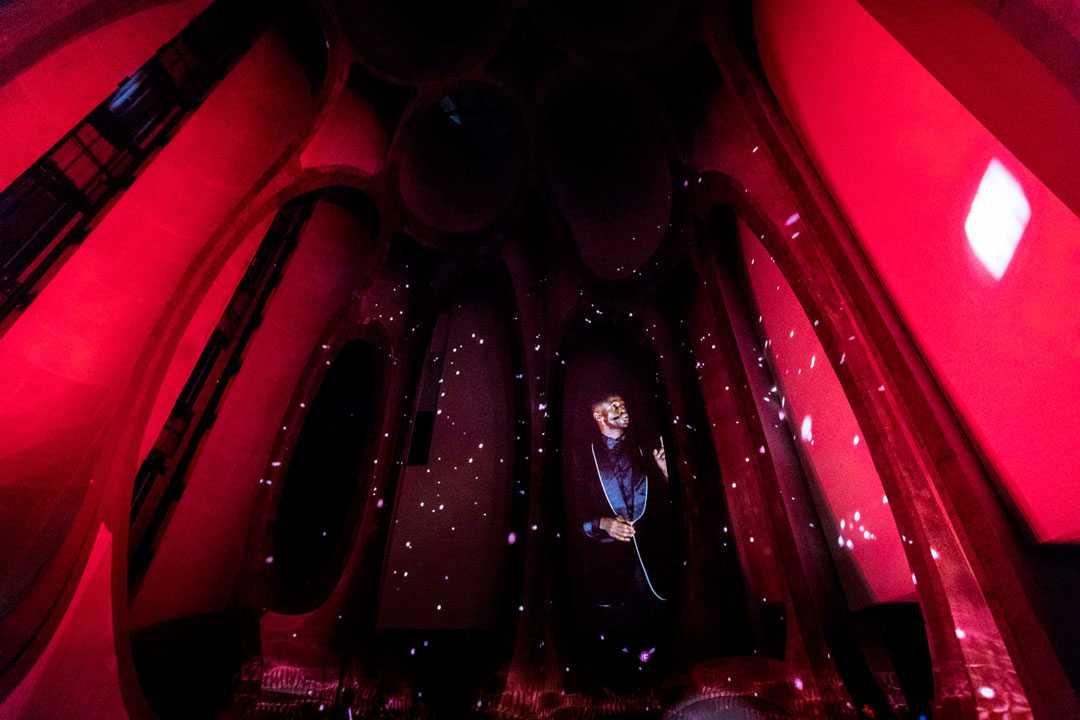Robe lights Night of Progress for Audi e-tron
- Details

Marius chose Robe moving lights - Esprites, LEDWash 600s and MegaPointes - to assist him in the task.
The fixtures were supplied by rental specialist MGG to the Night of Progress event which was created by the Full Circle agency for Audi South Africa and staged at Cape Town’s Zeitz Museum of Contemporary Art Africa. This stunning building is located in the Silo district of central Cape Town and is the largest museum of contemporary African art worldwide.
The museum is part of the conversion of a 57m-tall historic grain silo, originally built in 1921 and decommissioned in 2001, a spectacular project in its own right that was designed by UK-based architects Heatherwick Studio. Conserving and celebrating the original structure's imposing industrial heritage, 42 of the densely packed concrete cylinders have been successfully excavated and sculpted into large open spaces.
Marius and Bradley started their visual show design process by conducting a Lidar scan of the building’s interior, and specifically the part being utilized for the e-tron launch, and this was to allow accurate 3D modelling in Unreal Engine that could be used during pre-vis programming. This enabled them to come to site well prepared as time was always going to be exceptionally tight.
The projection mapping covered several of the hollowed-out silos making up the museum’s main atrium space.
Marius and Bradley did one complete set up - including lining up the six 20K projectors and getting the 26 moving lights in position, after which all the kit apart from the projection towers had to be struck so the museum could open that day.
Once it closed in the evening, the crew had just one hour to re-set everything and be show-ready.
With no flown rigging points, everything had to be floor based. The projector tower positions were carefully calculated and fitted as unobtrusively into the environment as possible.
“Lighting also had to be very diligently placed and carefully applied,” explained Marius whose job was very much not to detract from the details and impact of the projections but to support and augment with subtleties, grading, and colouration. Fixture placement was also critical to get the desired effects.
Ten LEDWash 600s were deployed on the floor and strategically positioned to give the substantial washes needed, and the 10 MegaPointes were in two straight lines across either side of the presentation area.
No haze was allowed in the museum due to the art works, so Marius needed lights bright enough to work without, and MegaPointes were chosen.
Four Esprites were positioned on the floor and the other two on two of the towers each side of the room, with all six used for key lighting and gobo work to complement that of the MegaPointes. They were a major part of the show and “worked brilliantly and just as I envisioned,” commented Marius.
Good key lighting was essential for the presentational parts of the event which were also relayed to IMAG screens at the sides so everyone had a prime view of the action.
Not every part of the building surfaces was covered by the projections, especially around the top of the space, so here Marius created a more graphical style of lighting with the MegaPointes filling in these gaps with appropriate texturing, shaping, and colouring, stylistically mimicking the projected content.
“Working with a fixture like MegaPointes made this galvanising task quite achievable,” he noted.
Lighting was programmed onto a grandMA console which also MIDI triggered all the projection cues running via a disguise media server. The show area was fully obscured from the operating position, so the MIDI triggered cues helped make the process as fail-safe as possible.
















